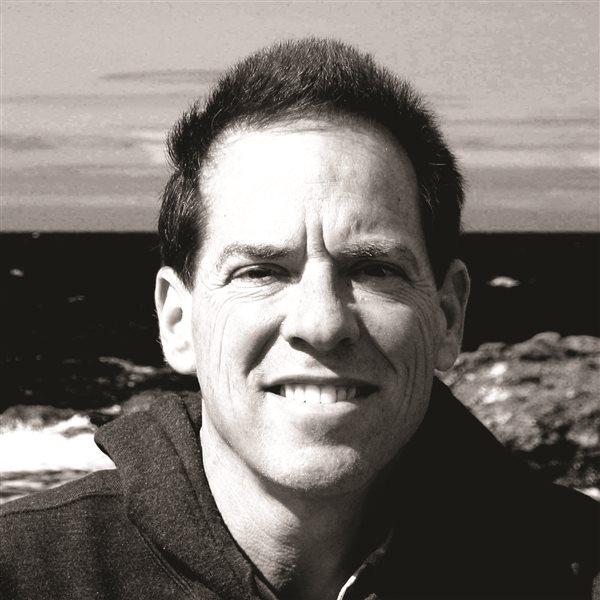
Past summer my friend Chris Barton asked me to take aerial photos of his church to help raise money to complete its associated school. The charitable mission sounded both worthwhile and fun, so I readily accepted. The opportunity presented itself one sparkling morning, as I returned the Flying Carpet from nearby Prescott.
 I’d yet to visit the church on the ground, but I knew it overlooked a prominent intersection just outside Flagstaff Pulliam Airport’s traffic pattern. On a whim I coordinated with the control tower and went for a look. The complex was easily spotted on open, elevated property, backed by magnificent views of the San Francisco Peaks. Armed with a telephoto lens and flawless visibility, it took only a few passes to capture the requisite views. That was easy and fun, I thought. So when referred a few months later for another charitable shoot, I eagerly volunteered.
I’d yet to visit the church on the ground, but I knew it overlooked a prominent intersection just outside Flagstaff Pulliam Airport’s traffic pattern. On a whim I coordinated with the control tower and went for a look. The complex was easily spotted on open, elevated property, backed by magnificent views of the San Francisco Peaks. Armed with a telephoto lens and flawless visibility, it took only a few passes to capture the requisite views. That was easy and fun, I thought. So when referred a few months later for another charitable shoot, I eagerly volunteered.
Camp Colton is a revered institution located on the west flank of Humphreys Peak. Every local sixth-grader is offered a week there to learn teamwork, natural sciences, and love for the outdoors; most Flagstaff natives under age 50 once attended.
Friends of Camp Colton Director Tracy Anderson sought aerial photos of the camp’s stunning mountainside location for fundraising purposes, including promoting the upcoming Kahtoola Agassiz Uphill trail-race benefit sponsored by board member Danny Giovale’s company.
Gorgeous autumn weather prevailed when the three of us connected. With golden aspen trees blanketing the mountain, we agreed to shoot the very next day. Given the camp’s western-slope location, I chose late afternoon sun to illuminate Colton’s idyllic setting amid brilliant fall colors.
Camp Colton resides in wooded wilderness, so I was concerned about finding it. I also worried from a safety standpoint about its proximity to the 12,633-foot mountain and surrounding foothills. Danny eagerly consented to help with spotting and shooting. But Tracy hesitated, having once been traumatized by a poor-weather Alaska air-taxi flight. I explained that we’d fly only in perfect weather, remain within minutes of the airport, and land at her request anytime during the flight. After considering it overnight, she agreed to join us.
At the airport I engaged Tracy and Danny in the preflight and pretakeoff checklists to ease any concerns. Then we launched into late-afternoon sun.
“There’s Camp Colton, under the wing!” Tracy exclaimed moments after takeoff. She noted the lodge roof amid dense pines, well clear of any threatening terrain. Unfortunately, smoke from a nearby forest-clearing “prescribed burn” blurred our subject. Danny snapped some photos, but clearly it was best to fix the camp location in my mind and return under better conditions.
That opportunity arose a few days later, at the peak of the autumn aspen display. With no one else available, I launched alone an hour before sunset. It was the most perfect flying evening anyone could ask for—crystalline skies and the aspens gilded gold by the sinking sun. Gleefully I steered for Camp Colton, my camera at the ready. Arriving at the area, I circled... and circled, and circled. After 30 fruitless minutes, I abandoned my search to revel in the vibrant scenery. Clearly I needed guidance to find the place.
For the next two weeks, clouds, rain, and snowshowers obscured the mountain. The one flyable afternoon Danny and I were again stymied by smoke. In the meantime, I tried gleaning GPS coordinates from Tracy’s cellphone photos taken at the remote camp, but they were unmarked.
Frustrated, I plotted camera GPS coordinates from our first shoot (which, of course, locate the airplane—not the subject) on Google Earth. After scouring 20 square miles of mountainside via my home computer, I finally pinpointed the forest-camouflaged camp and saved precise coordinates onto my tablet for inflight reference.
I enlisted Jean to help photograph the camp when the weather improved. Our first attempt was again smothered by lowering clouds. But the second try finally found us aloft on a clear day. By now the autumn aspens had long faded, but fresh mountaintop snow set a photogenic backdrop for the camp. True, powerful northeasterly winds generated downdrafts, drift, and turbulence in the lee of Humphreys Peak. But with Jean’s help, I smelled success.
Armed this time with precise GPS coordinates, we quickly spotted the camp. Surprisingly, it was snow-covered despite being some 4,000 feet lower than the frosted peaks. Jean and I took turns snapping photos and maneuvering the airplane.
“Finally!” said Jean as we steered five minutes home. “Mission accomplished!”
Not until examining our photos afterward did I notice that the facility’s tents had been stripped to their platforms. Apparently Camp Colton closes in winter, meaning our snow-bedecked-camp photos were irrelevant.
Danny salved my ego by observing that snow scenes will well promote the February fundraising race. But I’ll be photographing Camp Colton again when tents go up this spring. How many more attempts will be required I don’t know, but this time I’ll at least know where to find the place. And who’s complaining? Thanks to charity I’ve earned new friends and surfed sunbeams over flaming aspens.



